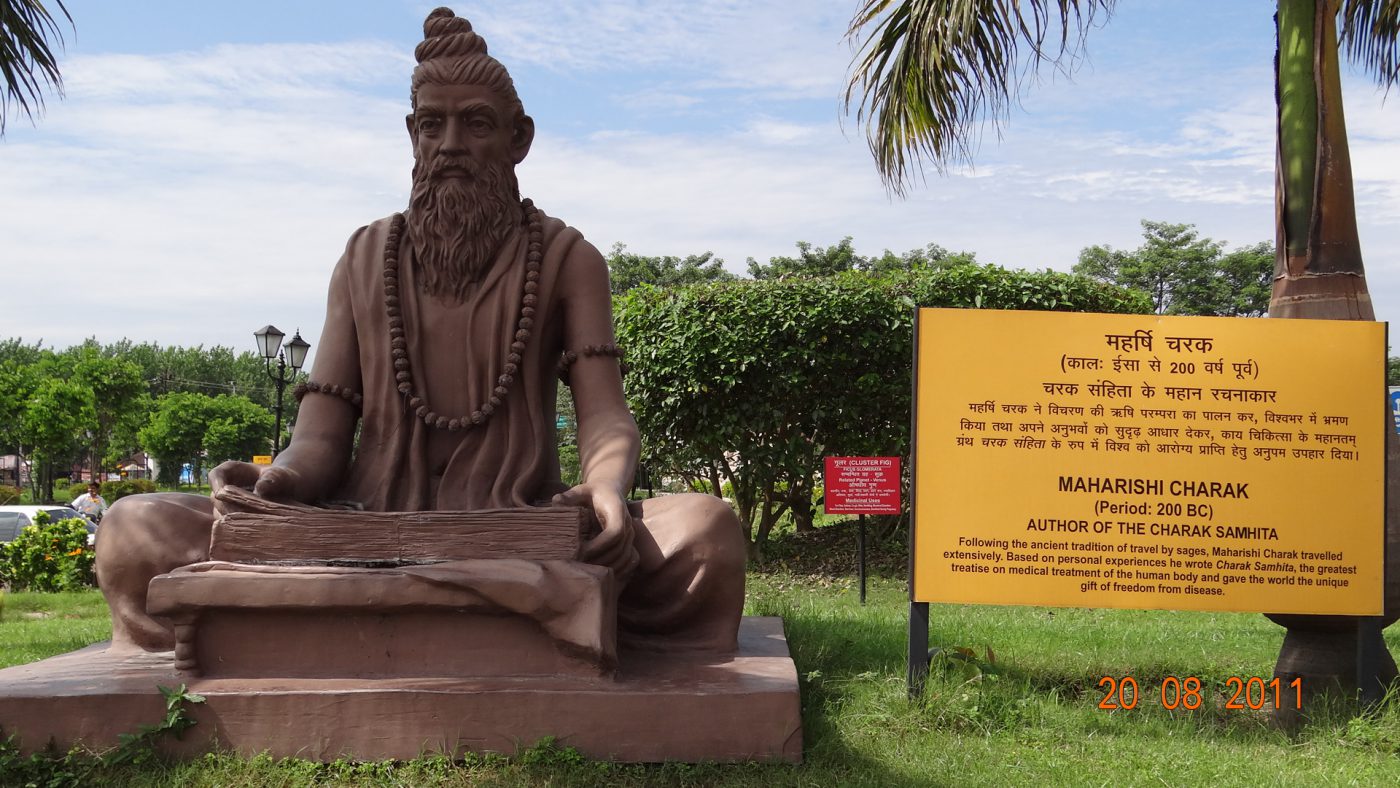Ayurvedic products and herbs
The Legend of Maharishi Charaka: The Father of Ayurveda
Explore the legacy of Maharishi Charaka, the Father of Ayurveda, and how his timeless wisdom inspires holistic health and balanced living in modern times.
Ayurveda, the timeless art of healing, feels like an old friend guiding us through the chaos of modern life. It’s not just about fixing what’s broken but about preventing problems and living in harmony with ourselves and the world around us. Let’s journey into the life of Maharishi Charaka, the extraordinary thinker who transformed Ayurveda into the incredible science we know today.
Think of a health philosophy that cares for your body, mind, soul, and even your surroundings. That’s Ayurveda—a 5,000-year-old tradition that feels more relevant now than ever.
At its core, Ayurveda focuses on balancing the three doshas—Vata, Pitta, and Kapha—to achieve and maintain health. It’s not about quick fixes or trendy hacks but a sustainable and thoughtful approach to wellness.
In a world where stress and junk food reign supreme, Ayurveda is like the calm voice of a wise elder saying, “Eat fresh, sleep well, and breathe deeply.” And honestly, who wouldn’t want to listen to that?
Contents
2. The Father of Ayurveda: Maharishi Charaka
Father of Ayurveda – Maharishi Charaka was more than just a healer—he was a true pioneer. Around 300 BCE, he revolutionized medicine with a radical idea: every person is unique, so treatments should be too.
His work wasn’t just limited to remedies. Charaka dove deep into anatomy and the causes of diseases, creating a system of care that feels astonishingly modern.
Think of him as the Sherlock Holmes of ancient medicine—keenly observant and solving intricate mysteries. His contributions laid the groundwork for today’s evidence-based medicine, showcasing his vision far ahead of his era.
3. The Creation and Development of Ayurveda
Ayurveda’s origins are as fascinating as its principles. Mythology credits Lord Brahma for creating it, with knowledge passed down to sages like Bharadwaj and the Ashwini Kumaras.
Father of Ayurveda- Maharishi Charaka built on this legacy, weaving his insights into the Charaka Samhita, a text that became the ultimate guide to health. Think of it as an ancient version of Grey’s Anatomy—except instead of scalpels, it has herbs and holistic wisdom.
4. The Charaka Samhita: A Timeless Ayurvedic Masterpiece
The Charaka Samhita is not just a book; it’s a legacy. Divided into eight parts, it offers a complete roadmap to health and wellness.
Charaka also introduced the Vata, Pitta, and Kapha system, which governs how our bodies function. When these are balanced, life feels great. But when they’re out of sync, it’s like having a glitchy phone—nothing works smoothly!
Even today, his advice on diet, lifestyle, and prevention feels spot-on, whether you’re dealing with stress or just figuring out how to eat better.
5. The Ayurvedic Philosophy of Health
Charaka’s philosophy of health is simple yet powerful: live in sync with nature, and you’ll thrive.
He emphasized eating seasonal foods, sticking to routines, and keeping active. Long before mindfulness was a buzzword, Charaka championed the importance of mental health and self-awareness.
Think of him as a life coach who also happened to be an expert healer. It’s the kind of wisdom you’d want on speed dial.
6. Maharishi Charaka’s Impact on Modern Medicine
Charaka’s insights continue to inspire modern medicine. Concepts like personalized treatments and holistic care have their roots in his teachings.
His focus on prevention and balance aligns beautifully with today’s integrative healthcare. Imagine visiting a doctor who prescribes yoga alongside medication—Charaka was envisioning that thousands of years ago!
7. Father of Ayurveda: A Gift to Humanity
Ayurveda is one of India’s most precious contributions to the world, with Maharishi Charaka as its guiding star. From herbal remedies to detox practices, its principles have found a home in wellness traditions worldwide.
For chronic illnesses and overall health, Ayurveda offers gentle, sustainable solutions. Charaka’s teachings remind us that true health isn’t just about avoiding sickness—it’s about living vibrantly and joyfully.
Conclusion:
Maharishi Charaka’s legacy is a shining example of the power of holistic healing. His teachings on lifestyle, health, and prevention continue to resonate across the world.
As we face the challenges of modern life, Ayurveda remains a trusted guide to harmony and balance. In Charaka’s own words: “Health is the foundation of all happiness.”
Also Read: 5 Mukhi Rudraksha Benefits
Also Read: Uses of Morpankh Plants


